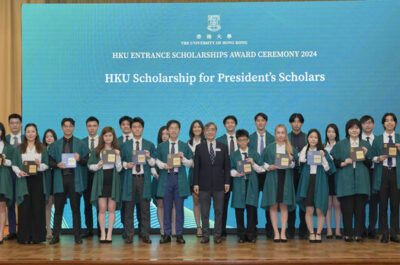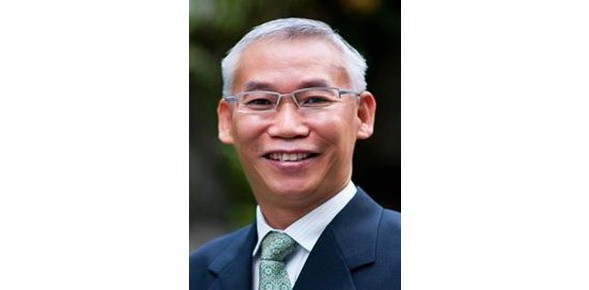"By moving towards Quality Tourism, we believe that tourism will continue to be a key economic driver for Singapore. We hope to bring in 4-6 per cent more tourism receipts on an annual compounded basis over the next decade." said Leong Yue Kheong.
Within ASEAN, Singapore, in terms of tourism is one of the most developed countries. In that respect, could you share some plans for new tourism developments of Singapore in the near future?
Leong Yue Kheong: The Singapore Tourism Board has embarked on a shift towards Quality Tourism, a yield-driven development model that emphasizes strong economic contribution, development of attractive tourism experiences, targeted marketing strategies, strengthening industry competitiveness and engagement with the local populace. This will ensure sustainable and quality tourism growth in the long run.
A key component of Quality Tourism is enhancing Singapore’s destination attractiveness through the development of compelling tourism content that complements our infrastructural offerings. In recent years, we have introduced new attractions such as the Gardens by the Bay, River Safari and Sports Hub. Next year, we can look forward to even newer attractions such as National Gallery Singapore and Singapore Pinacotheque de Paris.
It is imperative that we continue to inject the right complementary tourism experiences with these new attractions. We work closely with our industry partners to develop innovative tourism experiences that appeal to the increasingly discerning travellers we get. Examples of such collaborations include signature events such as the Singapore Formula One, Singapore Art Week and TravelRave, Asia’s most influential travel trade festival.
To appeal to the increasingly discerning travellers, our Quality Tourism strategy also sees us adopting a consumer-centric marketing approach. The focus of our marketing resources will be on influencing the visitorship of our target audience by addressing their specific travel needs and behaviour with the right messages at the right time. Our campaigns for various markets are customised according to our target audience’s needs.
Even as we drive demand to Singapore, our Quality Tourism strategy also looks into raising manpower capabilities, improving service and productivity levels and optimising operational efficiency in our hospitality and service sector.
Another aspect of Quality Tourism is to ensure that our tourism development efforts are aligned with local aspirations so that Singapore is not just an appealing tourist destination, but also an attractive city to live, work and play. Ongoing efforts are made to engage locals in our tourism projects so that they will play a part in creating the uniquely Singapore experience.
By moving towards Quality Tourism, we believe that tourism will continue to be a key economic driver for Singapore. We hope to bring in 4-6 per cent more tourism receipts on an annual compounded basis over the next decade. This is more than the annual 3-4 per cent projected for Singapore’s GDP. Visitor arrival is also expected to grow at an annual average of 3-4 per cent over the same period.
Tourism development is not at the same level among ASEAN member states. Is that considered an advantage for Singapore, or a challenge? In addition what would Singapore wish to do to further contribute promoting ASEAN tourism development?
L.Y.K.: Asia-Pacific is a region with a myriad of cultural identity and experiences, as well as varying geographical landscapes and scenery. Many of the long-haul travellers from destinations such as US, Europe or even Australia visit the region as part of their multi-destination trip. All ten ASEAN countries already collaborate actively to grow tourism in the region. As Singapore serves as a good access node in the regional tourism network, we hope to continue to strengthen cooperation among ASEAN members to harness the tourism potential of the region.
Such collaboration is significant to the growth of the regional tourism industry. One example is the potential of the region’s cruise industry. Southeast Asia’s diverse culture, landscapes and cuisines, coupled with its year-round good climate and presence of many islands, adds to its ability to become a viable cruising destination that will draw passengers from the region and beyond. As the lead coordinator for the ASEAN Cruise Development initiative, we will continue to work closely with the rest of ASEAN to develop the immense potential of the cruise industry in the region.
Singapore, as Chair of the ASEAN Quality Tourism Working Group from 2013 to 2014, looks forward to working with fellow ASEAN colleagues and the ASEAN Secretariat to see through the development of new products such as green hotels, homestay, spa services and MICE facilities within the region.
With ASEAN Economic Community (AEC) 2015 round the corner, and ASEAN Tourism having accomplished many of the initiatives set out under the ASEAN Tourism Strategic Plan 2011-2015, ASEAN is in the midst of setting up a Task Force to review the ASEAN Tourism Strategic Plan beyond 2015. We believe in the positive outcomes generated from these discussions and will continue to contribute to them.
In your view, which critical issues need to be addressed in the new ASEAN tourism strategy for the coming 5 to 10 years; why and how should these be tackled?
L.Y.K.: In the increasingly competitive global tourism landscape, the new ASEAN tourism strategy should focus on addressing issues such as tourism infrastructure and tourism manpower development so as to enhance the competitiveness of Southeast Asia as a regional tourism destination. ASEAN member states will need to develop tourism in a sustainable manner so that the quality and authenticity of their tourism offerings are not compromised.
Cruise tourism is considered one of Singapore’s strength. What conditions are needed to be fulfilled for this type of tourism product to enable further growth of cruise tourism in Southeast Asia?
L.Y.K.: The cruise industry in Asia is nascent and therefore, the support and resolve from the various ASEAN governments and travel trade to drive cruise infrastructure development and consumer demand from the region and beyond would be critical.
Singapore has played an integral role in championing regional cruise development. Under the ASEAN Tourism Strategic Plan 2011-2015, one key initiative is the formation of the Product Development Working Group (PDWG), with regional cruise as one of the PDWG’s main focuses.
Within ASEAN, we are working on regional ports infrastructure development to ensure that Southeast Asia (SEA) has multiple ports ready for bigger ships to be deployed in the region.
To drive demand to the region, we have to jointly market SEA’s cruise offerings and continue efforts to develop new cruising itineraries. This will put SEA in a good position to harness future growth in cruise tourism. In October 2013, NTOs from Singapore, Indonesia, Malaysia and Thailand hosted the first-ever regional familiarisation trip for an international delegation of cruise industry executives. These delegates from cruise lines and shore excursion planners – with representation from 8 international cruise lines – experienced first-hand the latest and most relevant SEA cruise itineraries. The familiarisation trip was a success and demonstrated how regional countries worked together to showcase South East Asia.
Recognising that the cruise market is travel-agent centric, we collaborated with the Asia Cruise Association (now known as the Cruise Lines International Association Southeast Asia (CLIA SEA)) on training sessions for travel agents around the region. This helps to build up the pool of cruise specialists and improve the distribution channels to consumers. This would in turn expand the regional passenger source market, making Southeast Asia more attractive to cruise companies.
All these initiatives will help ensure the optimal conditions for the regional cruise industry to flourish.
How meaningful is the establishment of the ASEAN Economic Community (AEC) – by the end of 2015 officially – to Singapore in general, and the tourism sector in particular?
L.Y.K.: The ASEAN Economic Community (AEC) 2015 calls for a well-connected ASEAN that will contribute towards a more competitive and resilient region, bringing people, goods, services and capital closer together through enhanced connectivity. As Singapore is a major air hub and gateway to Asia, these initiatives at the strategic level will potentially help boost the tourism sector.
TravelDailyNews Asia-Pacific editorial team has an experience of over 35 years in B2B travel journalism as well as in tourism & hospitality marketing and communications.




![[PR] PR_Ascott and Vimut Hospital_2024](https://www.traveldailynews.asia/wp-content/uploads/2024/04/PR-PR_Ascott-and-Vimut-Hospital_2024-400x265.jpg)










































































